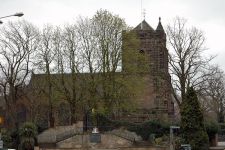Sutton Coldfield, sometimes known locally as Royal Town of Sutton Coldfield or Sutton (/ˌsʌtən ˈkɒldfiəld/ pronunciation (help·info)), is a civil parish and suburban town in Birmingham, England. The town lies about 7 miles (11 kilometres) northeast of Birmingham city centre and borders the Staffordshire district of Lichfield and the suburb of Erdington. Historically in Warwickshire, it became part of Birmingham and the new West Midlands metropolitan county in 1974. In 2015, the town elected a Parish/Town Council for the first time in its recent history.
History
Etymology
The etymology of the name Sutton appears to be from "South Town".
Prehistory
The earliest known signs of human presence in Sutton Coldfield were discovered in 2002–2003 on the boundaries of the town. Archaeological surveys undertaken in preparation for the construction of the M6 Toll road revealed evidence of Bronze Age burnt mounds near Langley Mill Farm, at Langley Brook. Additionally, evidence for a Bronze Age burial mound was discovered, one of only two in Birmingham with the other being located in Kingstanding. Excavations also uncovered the presence of an Iron Age settlement, dating to around 400 and 100 BC, consisting of circular houses built over at least three phases surrounded by ditches. Closer to Langley Brook (a tributary of the River Tame), excavations uncovered the remains of a single circular house surrounded by ditches, dating from the same period.
Near to Langley Mill Farm is Fox Hollies, where archaeological surveys have uncovered flints dating from the New Stone Age. Amongst the finds in the area were flint cores and a flint scraper, which had been retouched with a knife. The presence of flint cores suggest that the site was used for tool manufacture and that a settlement was nearby. Additionally, a Bronze Age burnt mound was also discovered in the area.
In his History of Birmingham, published in 1782, William Hutton describes the presenc
